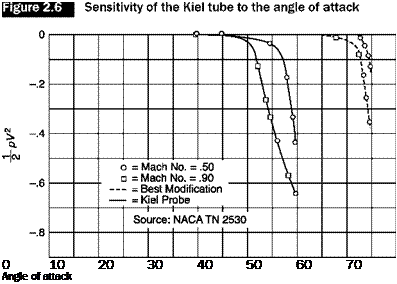Effect of gradients of stagnation pressure
In a viscous layer, the variation of speed, and hence of stagnation pressure, along the opening of the tube causes two effects:
■ first, the tube senses the average of the squared speed that is greater than the square of the speed on the axis of the tube;
■ second, the deviation of the stream towards the region of lower stagnation pressure brings down the streamlines with a stagnation pressure higher than that corresponding to the axis of the tube.
 |
The experimental results show that the pressure detected by a Pitot tube is equal to the pressure existing at a stagnation point moved about
Displacement of the effective center of the Pitot tube in the presence of a shear layer
|
|
0.18 d from the axis of the tube in the direction of increasing speed (Figure 2.7).
For this reason, to perform measurements in the boundary layer or other viscous layers (the stagnation pressure in many flows is constant outside these layers), appropriate Pitot tubes available on the market (Figure 2.8) are used, ending with very small tubes (with a diameter of 0.6 mm with the end flattened) to minimize both the effect of shifting the “effective center” and the effect of proximity of a solid wall. Probes for the boundary layer can easily be made in the laboratory from suitably truncated hypodermic tubes, bent at 90° and made flat.
Flattened tubes are very sensitive to the angle of incidence and are not suitable for use in highly turbulent flows because of the considerable delay (of the order of seconds) that they introduce in the transmission of pressure signals.












